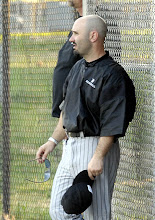After completing this class on bridging learning theory with technology, I see ways to implement and offer students more toward the meaning of their education. I look back from week one and still stand by my thoughts of connecting the curriculum to the students. Teachers need to focus on using different modalities to make more connections with more learners. If variety is not used, then differentiation is not met and many students are falling behind.
Dr. Wolfe says a students brain is not a camcorder and they will forget most of what is being taught that day (Laureate Ed., 2009). I really believe the more a teacher incorporates the social learning theory, the more students will engage. If this happens then learning may stick and students will come back with more from the previous day. If they leave talking about what learning took place in class, students may be closer to the camcorder that Dr. Wolfe speaks about in the struggles of learning.
As this course took shape, I realized that technology was used more for instructional purposes. I used the LCD projector for Powerpoint and advanced organizers. Since then I have implemented technology more as a learning tool, allowing the students to do more by producing and sharing their findings. Two tools I would like to integrate into my classroom are Voice Threads and Powerpoints. I have used blogs in class, but see that Voice Threads could provide a quicker more engaging result for student learning. It would allow groups or individuals a chance to create an artifact rather responding to a teacher directed blog with just text. In return sharing and more immediate responses could be offered by their peers as well as the instructor. I would also like to incorporate the Powerpoint tool allowing students to create their work and then peer teach the products in class. My tools of choice offer more than just technological experiences. They also offer problem solving skills and cooperative learning skills that along with technology will be needed later in life.
My long term goals for bridging learning theory with technology, will be to create and effectively mesh digital learning with other instructional strategies. "Educational technology can include any resources and any process that facilitates learning (Lever-Duffy, & McDonald, 2008). Now that I have been given more knowledge and tools in technology, I can incorporate this learning experience into my lesson plans for next year. When I sit down to look at how to teach material for next year, my focus will be how to implement tech tools with student learning. Computer Lab time is tight at my school, but if I know ahead of time what I want to do, I can sign up ahead of time and students will get more of what they need. Dr. Orey states, "Get the experiences into their head" (Laureate Ed., 2009). If I know what I want to do with my technology tools, I can then gain access to computers and help students make more, lasting connections.
Jay Raines
Laureate Education, Inc. (Executive Producer). (2009). Bridging learning theory, instruction, and technology. Baltimore: Author.
Lever-Duffy, J. & McDonald, J. (2008). Theoretical Foundations (Laureate Education, Inc., custom ed.). Boston, MA: Pearson Education, Inc.
Sunday, April 25, 2010
Subscribe to:
Post Comments (Atom)




No comments:
Post a Comment